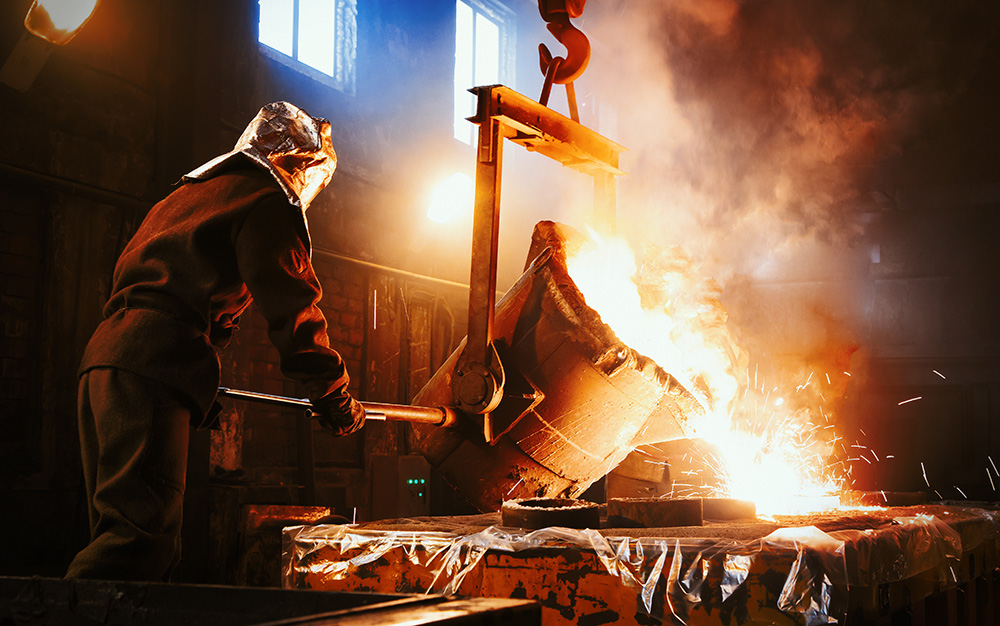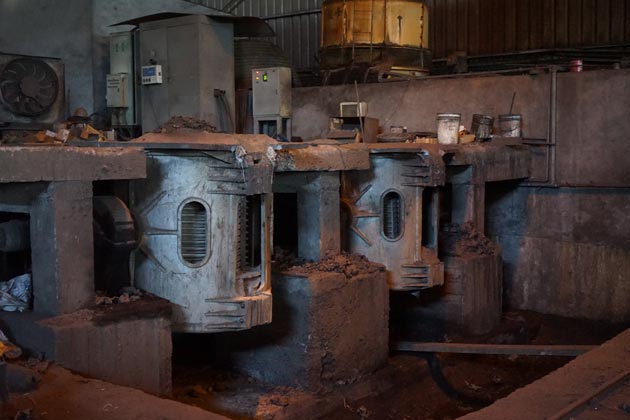Sustainability efforts in today’s Aluminum Foundry operations
Wiki Article
Discover the Innovative Techniques Utilized in a Metal Foundry for Superior Casting Results
In today's affordable production landscape, metal foundries are significantly embracing ingenious strategies to boost spreading outcomes - Aluminum Foundry. Advanced computer system simulations permit for exact modeling of molten metal habits, while 3D printing allows quick production of complex mold and mildews. Furthermore, environmentally friendly products and automation streamline operations. These developments guarantee considerable renovations in efficiency and quality control. However, the effect of these modern technologies on sustainability and manufacturing methods continues to be to be fully checked outAdvanced Computer Simulations in Metal Casting
Advanced computer simulations have actually changed the metal spreading procedure by improving precision and effectiveness. These sophisticated tools permit engineers to create virtual versions of cast parts, allowing them to analyze and anticipate the habits of liquified metal during the spreading stage. By replicating various specifications such as temperature level, flow price, and air conditioning prices, makers can recognize possible issues before physical production begins.This aggressive approach lowers waste and reduces expensive mistakes, ultimately causing boosted product top quality. Additionally, simulations promote the optimization of mold designs, making certain that they fulfill the specific demands of each job. The combination of computational fluid characteristics (CFD) and finite aspect analysis (FEA) more adds to the precision of these simulations, supplying insights that were formerly unattainable. Consequently, progressed computer system simulations have ended up being a crucial component of modern-day metal foundries, considerably advancing the sector's capabilities.
3D Printing for Mold And Mildews and Patterns
3D printing has actually arised as a groundbreaking technique for producing molds and patterns in the metal foundry sector. This modern technology allows the fast production of complicated geometries that typical manufacturing approaches struggle to attain. By using additive production, foundries can develop elaborate styles with lowered lead times and material waste. The capability to generate molds as needed enables better flexibility in style models, helping with faster prototyping and alterations.Moreover, 3D printing can utilize a selection of materials, including steels and plastics, customized to specific casting requirements. This versatility improves the precision of molds, leading to premium casting end results with improved surface coatings. Furthermore, the reduction in the variety of parts called for simplifies assembly processes, additionally maximizing manufacturing performance. As foundries continue to embrace 3D printing, they are poised to redefine sector requirements, paving the way for technology and improved efficiency in metal spreading operations.
Eco-Friendly Products and Processes
As the metal foundry sector deals with boosting stress to lower its ecological impact, the adoption of eco-friendly materials and procedures has actually ended up being crucial. Shops are now discovering sustainable options to standard materials, such as utilizing recycled steels and bio-based binders. These products not only minimize waste yet additionally lower power consumption during manufacturing.In addition, developments in sand casting strategies have actually resulted in the use of artificial sands that are less unsafe to the atmosphere. Foundries are also applying ingenious procedures like liquified metal therapy that lowers exhausts and improves the quality of actors products.
Water-based finishings have replaced hazardous solvents, advertising a much safer job atmosphere. By integrating these environment-friendly practices, metal foundries can significantly decrease their ecological impact while keeping top quality spreading results. This shift not only profits the setting but also lines up with the expanding consumer need for lasting production options
Automation and Robotics in Foundry Procedures
While the metal foundry sector welcomes innovation, the combination of automation and robotics is transforming procedures substantially. Automated systems streamline procedures such as mold making, metal pouring, and casting finishing, greatly boosting effectiveness. Robotics facilitate the handling of heavy products, minimizing the threat of office injuries and making certain much safer atmospheres.
Further, the usage of automated led automobiles (AGVs) maximizes product transportation within facilities, guaranteeing prompt shipment of components to appropriate workstations. By carrying out these innovations, foundries can adapt to rising and fall demands with greater dexterity, ultimately causing improved profitability and competition out there. As automation and robotics remain to evolve, they hold the potential to redefine traditional foundry practices and drive additional developments in casting techniques.
Real-Time Surveillance and Quality Assurance Techniques
The innovations in automation and robotics have led the method for a lot more sophisticated methods to quality control in metal foundries. Real-time surveillance systems utilize innovative sensors and information analytics to track critical parameters throughout the casting procedure. These systems continually evaluate variables such as material, temperature, and stress structure, enabling instant discovery of discrepancies from established criteria.Quality control techniques currently incorporate artificial intelligence algorithms that evaluate historical data to predict prospective problems prior to they happen. This aggressive method reduces waste and enhances general manufacturing performance. In addition, incorporated responses you could check here loopholes enable quick changes, ensuring that each casting meets stringent quality requirements.
The application of electronic twins-- online replicas of physical properties-- has actually additionally revolutionized quality assurance, permitting designers to mimic and optimize processes in real-time. Together, these ingenious methods significantly improve the dependability continue reading this and top quality of castings, establishing new industry criteria in metal foundry operations.
Often Asked Inquiries
What Sorts of Metals Are Commonly Cast in Shops?
Generally cast metals in foundries consist of light weight aluminum, bronze, brass, and iron. Each metal displays distinct homes, making them suitable for numerous applications, such as automobile parts, equipment, and creative sculptures, enhancing their adaptability in production.
How much time Does the Casting Process Normally Take?
The casting process commonly takes a number of hours to days, depending upon factors such as the complexity of the mold and mildew, type of metal utilized, and air conditioning requirements. Each phase influences the general period significantly.What Precaution Remain In Area for Foundry Employees?

Exactly how Are Problems in Castings Identified and Addressed?
Problems in castings are identified through visual inspections and non-destructive screening approaches. When found, foundry workers resolve them by improving procedures, changing material compositions, and applying restorative actions to assure quality and conformity with requirements.What Is the Cost Array for Metal Casting Services?
The cost variety for metal spreading solutions commonly ranges $1 to $10 per extra pound, depending upon aspects such as material kind, intricacy of the design, and production volume, affecting total rates considerably.In today's affordable manufacturing landscape, metal foundries are progressively taking on cutting-edge techniques to enhance casting results. As the metal foundry sector faces boosting stress to reduce its environmental impact, the adoption of eco-friendly products and processes has actually ended up being vital. Foundries are now discovering lasting options to typical materials, such as making use of recycled metals and bio-based binders. By integrating these environment-friendly techniques, metal foundries can substantially reduce their ecological impact while preserving premium casting results. The innovations in automation and robotics have actually paved the means for much more important site sophisticated approaches to top quality assurance in metal foundries.
Report this wiki page